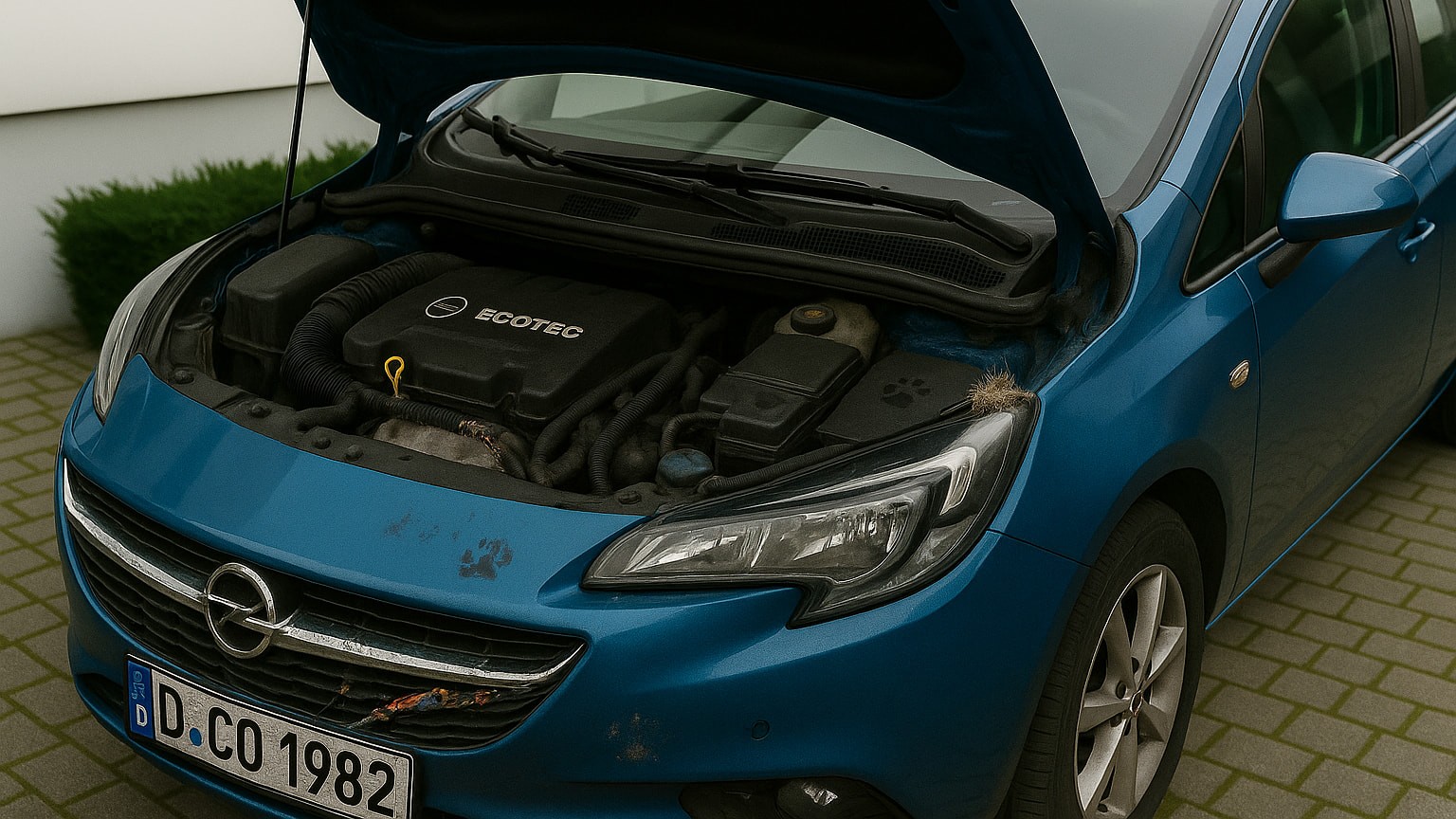
Marten Damage in Cars – Everything You Need to Know
Marten damage to cars comes as a nasty surprise for many drivers. Hardly visible, but often expensive to repair: chewed cables, gnawed hoses, or destroyed insulation can cause not only annoyance but also high repair costs. Particularly treacherous – the damage often occurs overnight and is sometimes only noticed late, for example through error messages or engine problems.
In this guide, you will learn how marten damage occurs, how to recognize it, which protective measures are useful, and what role insurance plays in an emergency. This way, you will be well prepared and can protect yourself from unnecessary costs.
Why Are Martens so Dangerous for Cars?
For many drivers, it's the same story every spring and fall: martens seek out warm engine compartments and leave their mark. These small animals gnaw on cables, hoses, and insulation materials - not because they are hungry, but out of territorial behavior and curiosity.
- Territorial fights: If a marten smells the scent marks of a rival, it reacts aggressively and bites cables and hoses.
- Warmth: After a drive, the engine compartment is an ideal shelter for martens.
- Smells & materials: Certain plastics or smells also attract animals.
The result: damage to ignition cables, cooling hoses, or insulation, which often goes unnoticed until the first warning message appears in the cockpit.
Detecting Damage Caused by Martens to Your Car
Recognizing martens damage in good time is crucial to avoiding higher follow-up costs. Typical signs are:
- Chewed cables (ignition, ABS, alternator cables)
- Destroyed insulation materials in the engine compartment
- Fluid loss due to gnawed hoses
- Uneven engine running or error messages on the display
- Traces of the animal: small paw prints, saliva residues, or feces
Even small bite marks can cause major damage, for example, if coolant leaks or sensors no longer work properly.
Protective Measures – How to Prevent Damage Caused by Martens
Since martens cannot be completely kept away, prevention is the best solution. Depending on the vehicle and environment, there are various options:
- Ultrasonic devices: Emit sounds that are unpleasant for martens but inaudible to humans.
- Electric shock devices: Work like a small electric fence in the engine compartment and are considered particularly effective.
- Cable protection & sheathing: Additional protective tubes or metal sheathing make it more difficult for martens to bite through cables.
- Engine washing: Removes odors from other martens that could otherwise trigger aggression.
- Repellent sprays: Short-term solution must be reapplied regularly.
Insurance for Marten Damage – What You Need to Know
Insurance is a crucial factor when it comes to damage caused by martens. Although much of the damage can be prevented, the risk cannot be completely ruled out. Drivers should therefore be fully aware of how their policy protects them in the event of an emergency:
- Partial comprehensive insurance: Usually covers direct damage caused by martens, e.g., chewed cables or hoses.
- Consequential damage: Whether resulting damage (e.g., engine damage due to overheating) is also covered depends on the contract. Not all partial comprehensive insurance automatically covers this.
- Deductible: As with all comprehensive insurance claims, the agreed deductible applies.
- No-claims class: There is usually no downgrade, as this is not a liability claim
👉 Tip: Check your insurance policy carefully and make sure that damage caused by martens, including consequential damage, is covered. This can save you several thousand dollars in repair costs in an emergency.
Checklist and Summary: Preventing Damage Caused by Martens
To avoid expensive repairs in the first place, here is an overview of the most important measures:
- Regularly check the engine compartment for bite marks.
- Fit protective covers to cables and hoses.
- Wash the engine to remove scent marks.
- Install ultrasonic or electric shock devices.
- Use repellent sprays as a short-term solution.
- If possible, park your vehicle in a closed garage.
Frequently Asked Questions (FAQs)
Is damage caused by martens covered by insurance?
→ Yes, direct damage is usually covered by partial comprehensive insurance. Whether consequential damage is also covered depends on the contract.
Is there an excess for damage caused by martens?
→ Yes, the agreed excess for comprehensive insurance is applied.
Will your insurance rating go up if you have damage caused by martens?
→ No, your no-claims bonus will remain unaffected.
Are marten repellents allowed in cars?
→ Yes, ultrasonic and electric shock devices are allowed as long as they are installed properly.
Where should a marten repellent be installed in a car?
→ In the engine compartment, in critical areas such as cables or insulation. Installation should be carried out by a specialist.
Conclusion – Prevention Is the Best Protection
Damage to your car caused by martens is not only annoying, but can also be expensive if cables, hoses, or sensors are affected. If you recognize the signs in time and take the right protective measures, you can save yourself high repair costs in the event of an emergency.
Especially when buying a used vehicle – for example, through our car auction – it is worth taking a close look at the engine compartment. As a Copart member, you can view vehicles in advance at our locations and check their condition thoroughly.